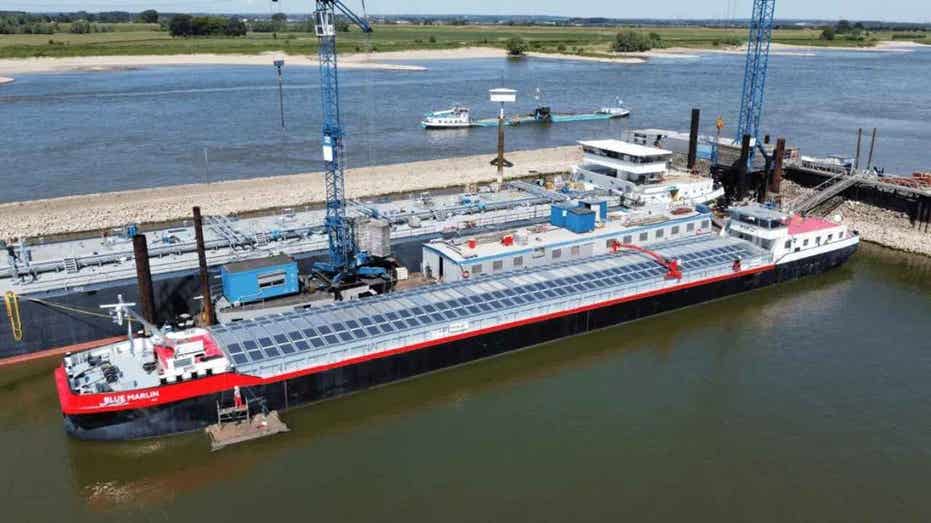
Germany has just made maritime history with the launch of the world’s first hybrid solar-powered cargo ship. Meet The Blue Marlin—a groundbreaking vessel that’s setting new standards in sustainable shipping by combining cutting-edge solar energy with a diesel-electric hybrid system. Designed to reduce emissions while maintaining high performance, this innovative ship could reshape how goods move across inland waterways.
How Solar Power Moves the Blue Marlin
The Blue Marlin is equipped with 192 solar panels, capable of generating up to 35 kilowatts of energy under ideal conditions—that’s enough to charge over 1,400 smartphones at once!
Developed by Wattlab, the solar system feeds electricity directly into the ship’s propulsion system. Unlike earlier eco-vessels, which used solar only for onboard electronics, the Blue Marlin actually moves using solar energy. When traveling light or downstream, it can even operate solely on solar power for short trips.
To ensure reliability, the ship is backed up by four diesel generators. This hybrid setup allows seamless switching between solar and diesel-electric power, depending on the conditions. An automated energy management system determines how power is distributed, optimizing fuel efficiency and reducing environmental impact. It even uses a technique called peak shaving, which pulls energy from solar and battery reserves during high-demand periods instead of firing up extra generators—further lowering emissions.
Perfect for Germany’s Waterways
Measuring about 282 feet long and 31 feet wide with a shallow draft of just 3 feet 7 inches, the Blue Marlin is tailor-made for Germany’s intricate canal network.
Its hull was built in Romania and then outfitted in the Netherlands, with operations now based out of Cologne, Germany. One of the vessel’s standout features is SEAFAR’s remote navigation technology, enabling remote-controlled sailing on certain routes. This boosts safety and eases the workload for the onboard crew.
Cleaner Energy and Smart Design
The Blue Marlin’s solar system generates up to 37,500 kilowatt-hours per year, helping to avoid 79,000 pounds of CO₂ emissions annually. Its modular design allows for connection with push barges, enabling the transport of up to 3,430 short tons of bulk goods. Additionally, the ship's diesel-electric system is future-ready—it can run on cleaner fuels as they become available, making it adaptable in a fast-changing energy landscape.
Why the Blue Marlin Matters
As Kurt from Cyberguy puts it, the Blue Marlin is not just a showpiece—it's a working model of what the future of cargo transport could look like. By fully integrating solar power into its core propulsion and operations, the ship demonstrates that sustainability and performance don’t have to be at odds.
With innovations like this, cleaner and smarter shipping is no longer a dream—it’s already underway.
💬 What policies or incentives do you think would encourage companies to invest in sustainable shipping? Share your thoughts with us at Cyberguy.com/Contact






0 Comments